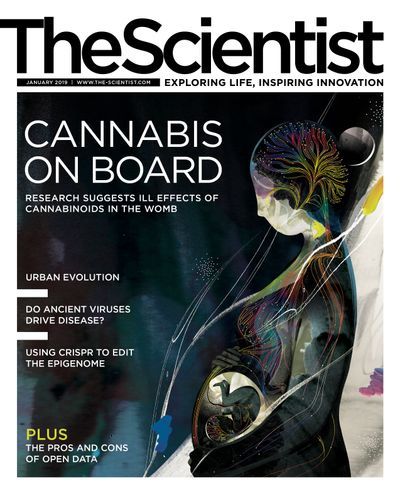ABOVE: E-SIGNATURE: Tissue in a frog’s uninjured hindleg depolarizes (bright green, right) in an electrical pattern that mirrors the amputation of the other leg (left).
SERA BUSSE, PATRICK MCMILLEN, MICHAEL LEVIN, TUFTS UNIVERSITY
EDITOR'S CHOICE IN NEUROSCIENCE
The paper
S.M. Busse et al., “Cross-limb communication during Xenopus hindlimb regenerative response: Non-local bioelectric injury signals,” Development, 145:164210, 2018.
Many animals can regenerate lost tissue during at least part of their life cycles. Studies of Xenopus frogs and other amphibians have found that limb regeneration involves bioelectrical signaling at the amputation site. But growing evidence suggests such signals extend over greater distances. “Electrically speaking, the body seems to be an integrated system,” says Tufts University developmental biologist Michael Levin.
To explore long-range electrical signaling in a regeneration context, Levin’s group amputated part of the right hindlegs of anesthetized froglets that had been soaked in a fluorescent dye that indicates depolarization—a...
University of California, Davis, molecular biologist Andrew Hamilton, who was not involved in the study, says the discovery of this phenomenon—which Levin’s group calls bioelectric injury mirroring (BIM)—is “absolutely brilliant.” A next step will be characterizing how the signal is relayed, a challenge in froglets anesthetized using nerve-blocking drugs, he notes. If nerves turn out not to be involved, “I have no idea what is regulating such a fast response.”
The findings mean researchers should rethink the standard practice of using uninjured limbs as controls for amputated ones, Levin notes. His team now wants to understand the role of BIM in regeneration, and harness it to induce regrowth in frogs and other animals. “The real experiment to do is to amputate the leg, manipulate the voltage on the opposite side, and ask if there’s any change in regeneration,” he says. “That’s next.”
Interested in reading more?







